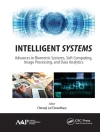Discontinuous control systems are the oldest type of control system and the mostwidespreadtypeofnonlinearcontrolsystem. Thetheoryofdiscontinuous control, and the theory of relay feedback systems in particular, is usually c- sidered a mature subject. However, many problems in discontinuous control theory still remain open. One problem involves the input-output properties of these systems, knowledge of which is extremely important to every app- cation. Two types of discontinuous control systems are studied in this book. The ?rst is the so-called relay feedback system, which normally encompasses – lay servomechanisms, various on-o? controllers, sigma-delta modulators, relay feedback tests used for process dynamics identi?cation, and controller tuning. Relaysystemsareoftenconsideredthemaintypeofnonlinearsystem, whichis evident by the enormous amount of house temperature control systems (that are usually implemented as on-o? controllers) that exist. The theory of relay systems is an old subject. The problem of analysis of relay feedback systems was ?rst considered by L. Mac Coll in 1945 [71]; the study was motivated by thedevelopmentofrelayservomechanismsofmissilethrustersontheonehand and vibrational voltage regulators on the other. Mac Coll’s analysis was based on an approximate approach close to the describing function method. Later, exact methods of analysis of relay feedback systems were developed, the most well-known of which is the Tsypkin locus [94]. The exact approach developed by Tsypkin, however, did not consider the servo aspect of relay feedback c- trol. Its purpose was limited to ?nding periodic motions that may occur in a relay system in an autonomous mode or under external excitation.
Tabella dei contenuti
The locus of a perturbed relay system theory.- The servo problem in discontinuous control systems.- The locus of a perturbed relay system (LPRS) theory.- Input-output analysis of relay servo systems.- Analysis of sliding modes in the frequency domain.- Performance analysis of second-order SM control algorithms.- Applications of the locus of a perturbed relay system.- Relay pneumatic servomechanism design.- Relay feedback test identification and autotuning.- Performance analysis of the sliding mode—based analog differentiator and dynamical compensator.- Analysis of sliding mode observers.












